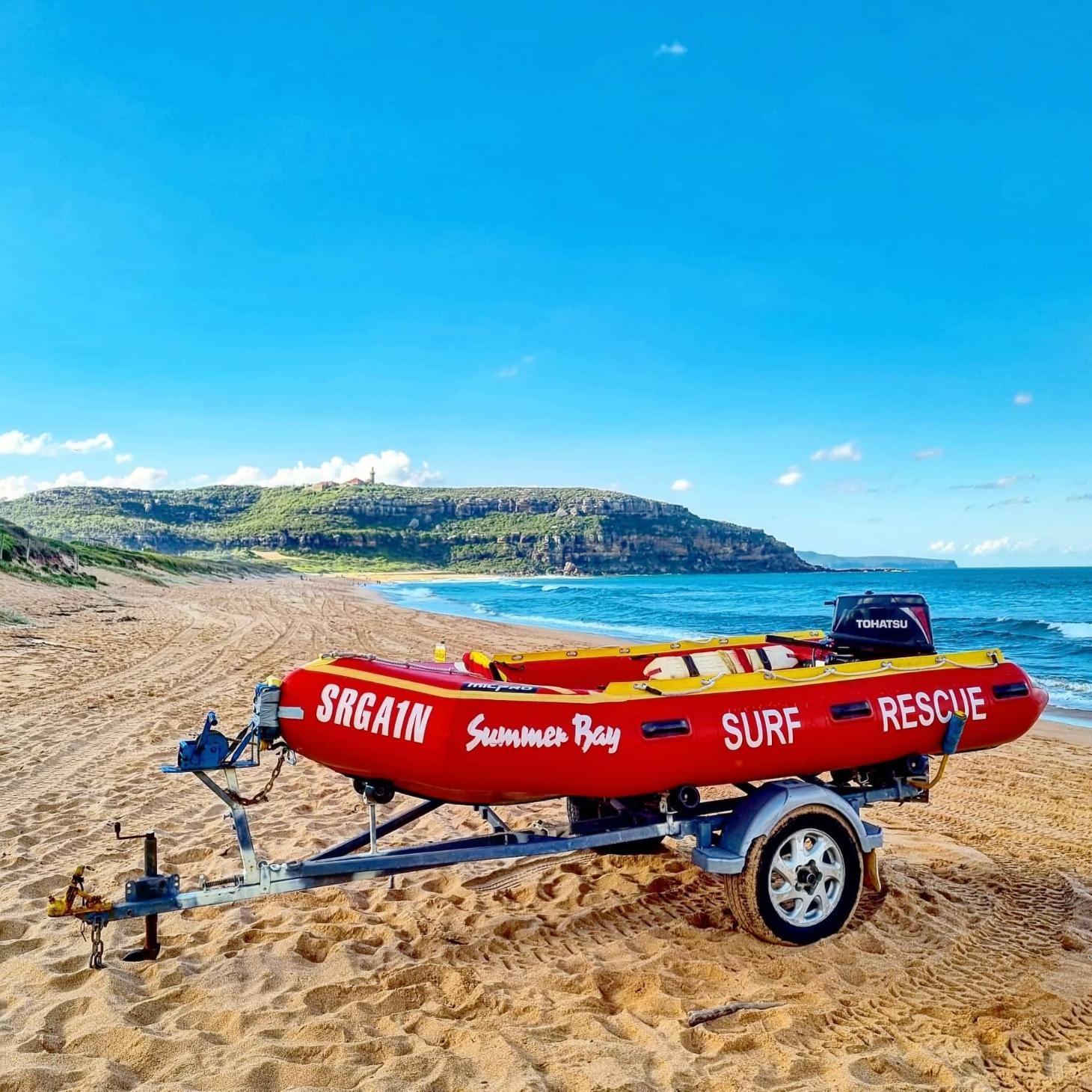November 7 - 13, 2021: Issue 517
Terry Kirkpatrick – North Palm Beach SLSC Member
Psychologist In The Area Of Trauma And Mental Health
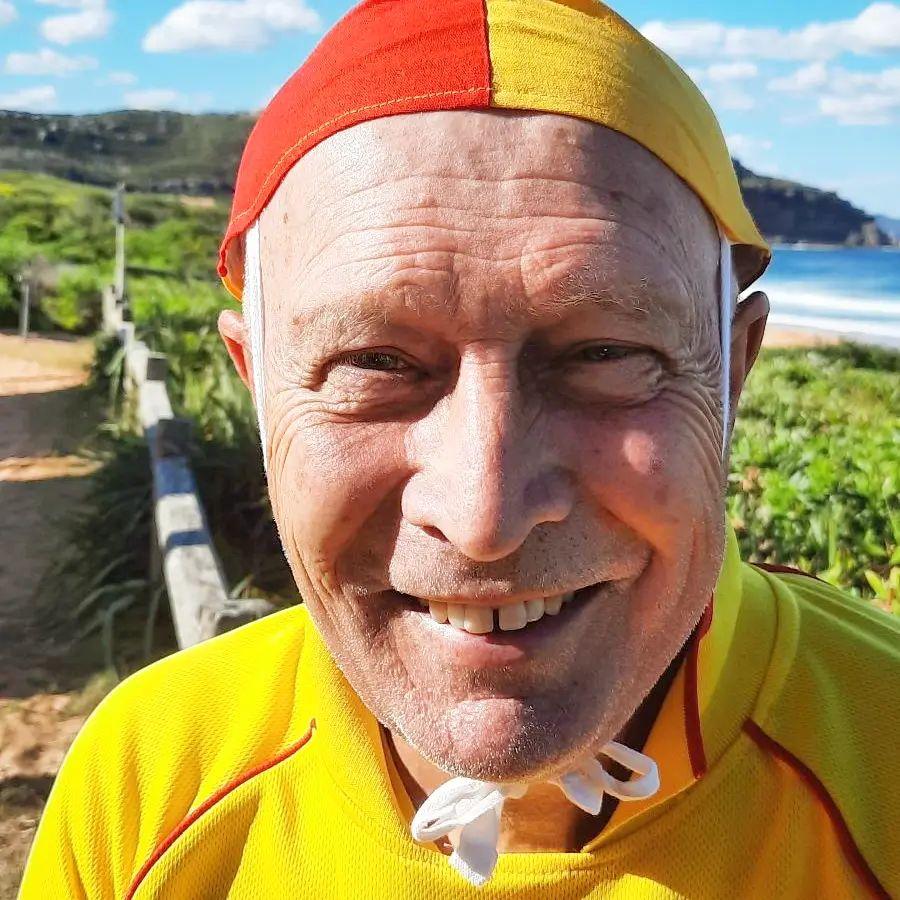
North Palm Beach SLSC is celebrating 75 years of serving the community this Season. Originally formed among those who camped in Governor Phillip Park, a series of near accidents caused a group of these campers and local families to form patrols at this end of Palm Beach. In 1939 the 'Barrenjoey Surf Life Saving Club' was established, originally set up in the Beacon Store (located opposite the current Barrenjoey Boat House) and was made 'officially' the North Palm Beach SLSC in 1946.
This quiet end of the peninsula becomes very popular over Summer, people like stepping into a quiet green area where, if you look up to the headland, the view has not changed that much in over a140 years. This is a unique Sydney club, whose patrol areas stretch to a National Park, and made popular by its use in well-known television drama Home & Away.
North Palm Beach Surf Life Saving Club has always been at the forefront of lifesaving innovation. Many of the patrolling procedures techniques and items of equipment that have become the standard ways of doing things these days were pioneered on North Palm Beach. This was largely due to necessity. The lifesavers at North Palm Beach had the longest area of beach in Sydney to patrol with only a relatively small number of active members. Not only that, the nearest ambulance had to come from Narrabeen and on busy weekends it could take up to two hours for medical assistance to be available.
In the 1980s Dr Yeo the Spinal Surgeon from Royal North Shore Hospital worked with the lifesavers at North Palm Beach to develop the techniques and equipment for dealing with spinal injuries in the surf. He spent hours in the surf while the club members experimented on him using various neck supports and trialling different techniques for moving the patient out of the water. Many of these techniques have been adopted by Surf Life Saving and are used on beaches throughout Australia.
In the days before the radio repeater network the club was the first to use UHF (Ultra High Frequency) radios to cover the vast distance patrolled.
North Palm Beach SLSC was one of the first clubs to introduce roving patrols where members walked the length of the beach away from the traditional flagged area and it was the first Surf Club to own a four wheel drive vehicle and to use it as an integral part of patrolling the beach. The members purchased a red Suzuki 4-wheel drive and used it to transport gear and equipment along the beach. The club then was the first to use the Polaris All Terrain Vehicle ATV. At that time most clubs were using quad bikes but the lifesavers at North Palm Beach SLSC found the ATV was much more versatile for patrols as it could carry 3 lifesavers as well as rescue and first aid equipment. The Club has recently upgraded to the Canam Defender ATV that has a steel tube chassis tray and equipment box. The Canam is fitted with radios flashing lights and reversing warning beeper and is petrol powered with a governed top speed of 40 km hr. This vehicle easily transports 2 lifesavers with rescue boards spinal boards rescue tubes and fins as well as first-aid equipment including a shock pack defibrillator oxy viva and pulse oxymeter.
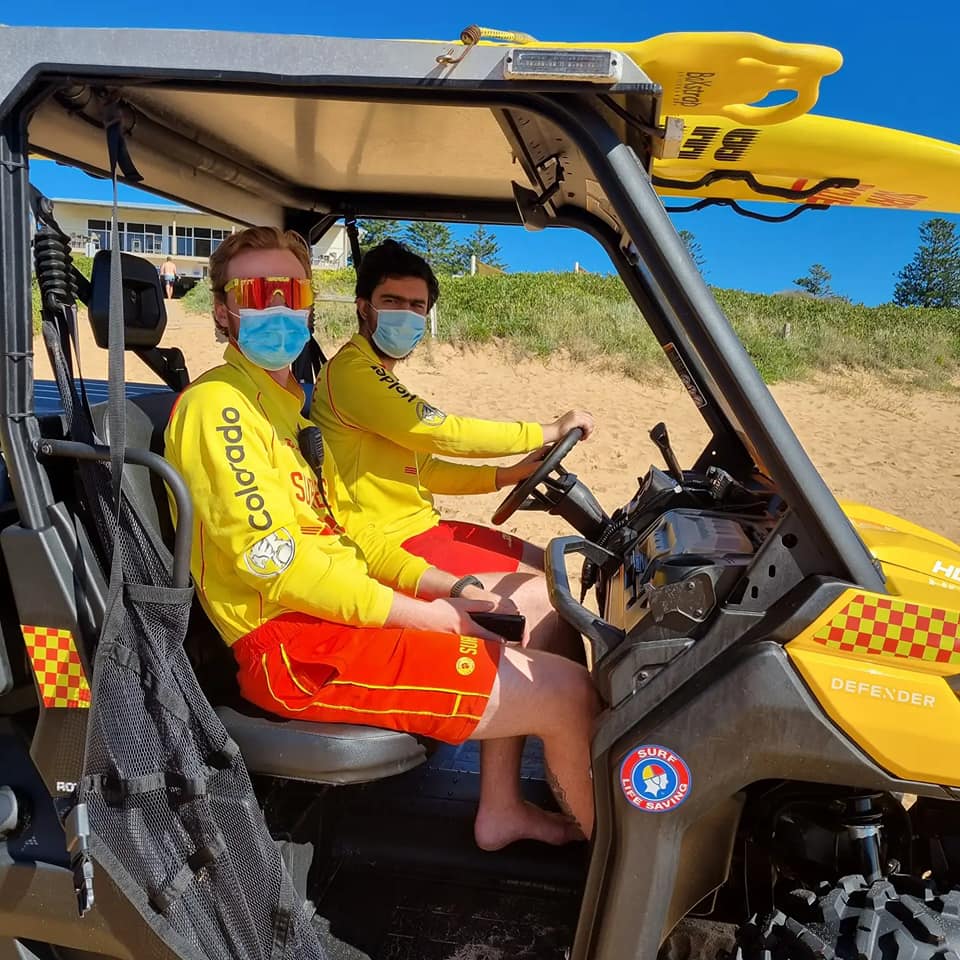
In the late 1970s North Palm Beach SLSC joined with Palm Beach and Whale Beach Surf Life Saving Clubs to operate a jet-boat service for the northern part of the peninsula. The lifesavers at North Palm Beach were also among the first clubs to use IRBs rubber ducks as integral patrol equipment in the 1980s. The use of IRBs and jet boats made it much easier to patrol the large water area covered by the club and provide assistance to the many swimmers windsurfers and kite surfers that use the stretch of beach at the base of Barrenjoey Headland. Also during the 1980s many members of North Palm Beach were among the first volunteer crew on the Westpac Rescue Helicopter Service. As part of the Sydney 2000 Olympics lifesavers from North Palm Beach SLSC provided specialist water safety in Sydney Harbour for the triathlon events.
New Members are needed for this surf club beneath Barrenjoey. YOU can Train for your Bronze Medallion or become a First Aider while making new friends and making a difference.
Find out more at: www.northpalmbeach.com.au/joining
Website: www.northpalmbeach.com.au
On Facebook: www.facebook.com/northpalmbeachslsc
The North Palm Beach SLSC recently posted on one of its social media pages a tribute to long-term ember Terry Kirkpatrick:
'Terry has not missed a single patrol in 15 YEARS.
For his dedication to Surf Lifesaving Terry was recently awarded a monogrammed 100% patrol towel (received by all patrol members that attended 100% of their patrols last season) plus a North Palmy bag and an amazing Drizabone coat.
All of us would like to thank Terry for his commitment to our club and to saving lives.
Don't forget to say "hi" and congratulate him when you see him patrolling.'
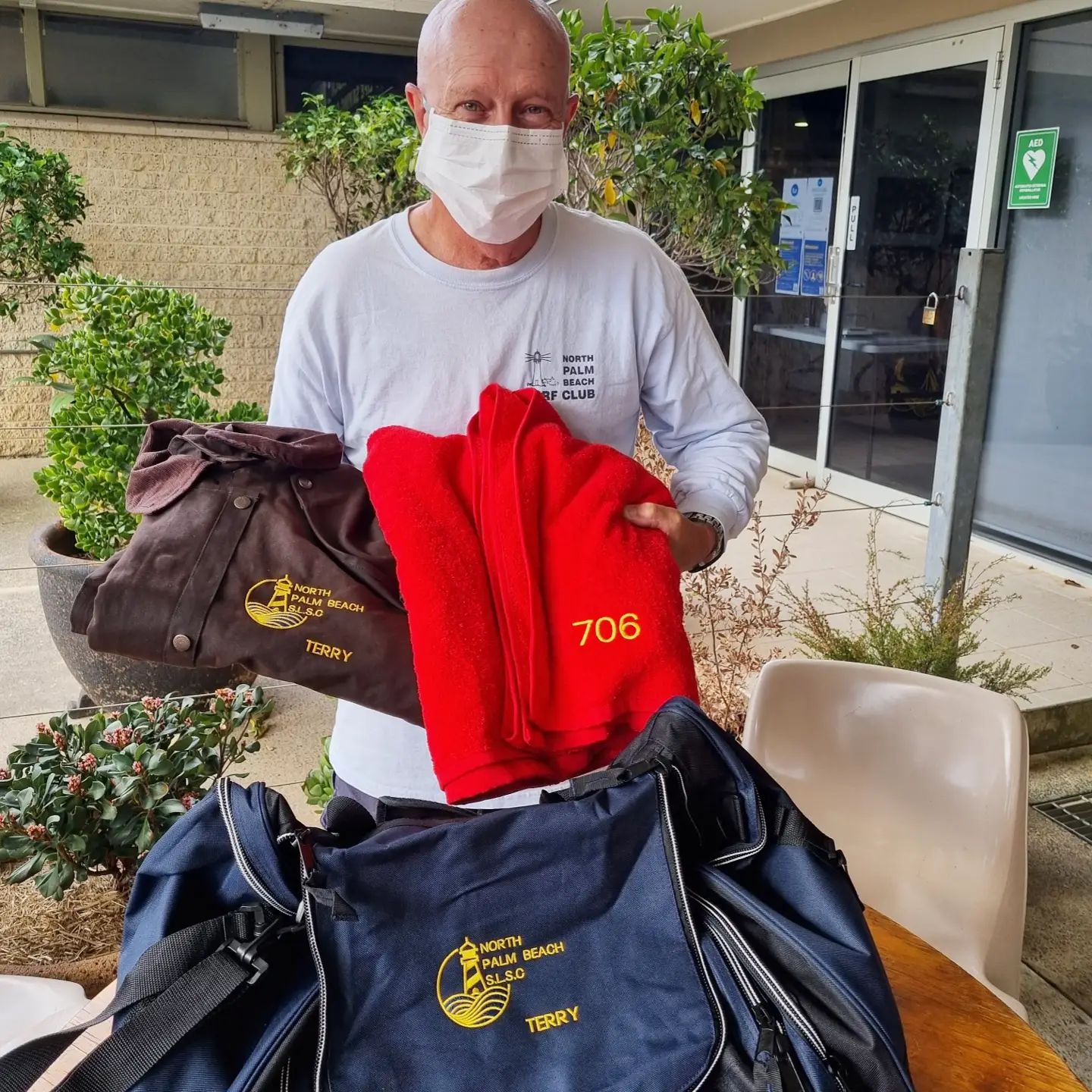
This week a few insights from North Palm Beach SLSC Member Terry Kirkpatrick on why this is the best surf club for him.
When and where were you born?
I was born in 1955 at North Ryde.
Where are you living now?
I live in Gerringong, between Kiama and Gerroa on the South Coast.
And you’re coming up to North Palm Beach SLSC to fulfil Patrols each year?
Yes, I’ve been doing that for several Seasons.
When and where did you first join the Surf Life Saving movement?
As a youngster I grew up in North Ryde, which, back in the day, was almost semi-rural area – lots of market gardens and paddocks, the girls had horses and all that kind of thing.
I actually had to wait until I was 10 years old before my parents would allow me to hitchhike to Manly Beach on the weekends. We used to go up Epping road, down Delhi road, then through the back of Chatswood, but the easiest way to get to Manly was to go straight along the Pacific Highway and down Military road.
I joined Narrabeen Beach SLSC in 1981.
So you have been in Surf Life Saving for 40 years this Season?
Yes, I’ve patrolled for 40 years.
Have you had any challenging incidents you have had to respond to over that time?
Oh yes, hundreds. There’s been lots of dangerous surfs, and times when I’ve been scared of having to go in and help someone. We have had resuscitations from drownings that we’ve had to deal with. We’ve also had to attend to some quite severe head and neck injuries overt that time. So I guess it’s the full range of what Life Savers experience.
Then you have your bluebottle stings and other less severe matters to help people with.
Narrabeen Beach SLSC is a great crew – who were you on Patrol with there?
There was a bunch of local kids I was on Patrol with; Scott Brassey, Martin Fletcher, Jason Farrell, and Wayne Scwebel, all guys who have kicked on in surf lifesaving over the years.
Why did you want to join Surf Life Saving?
Originally, when I was young and hitchhiking to the beach, the best thing about the surf club was that you could leave your surfboard there and it was safe, and then you didn’t have to try and transport it. Then it was just sharing; sharing the environment, the love of the surf, with likeminded people, and people who were willing to have some commitment to the community. It was twofold – I gained a lot from it and through my involvement I was able to give back.
Do you still have to do your proficiency each Season?
Yes; still have to do that each Season. I regularly train at the gym to maintain a fitness level, because I am getting older – that helps me maintain the standard that’s required.
When did you move from Narrabeen Beach SLSC to North Palm Beach SLSC?
Between Narrabeen and Palmy, I went to Warriewood SLSC and then Freshie (Freshwater SLSC) – and that’s because I was living in those suburbs at the time – I was never tribal about my surf club commitment. When I was younger, and as a young family man, I was always in the club that I lived closest to. After Freshie when I had a young family we were living at North Curly (North Curl Curl), I joined North Curly. While there I did Patrols and Water Safety for the Nippers – all my three kids went through Nippers, one boy and two girls.
Then my youngest at that time, I was teaching her to surf. We used to head up to North Palm Beach as it wasn’t as crowded and a great place to learn. I knew all the guys at North Palm Beach and they used to let us have a shower after we’d been in the surf. One day Howie, who was the cub President at the time, and still is, said they were having trouble covering the Saturday Patrols. Ellen, my youngest, was just at the stage of doing her Surf Rescue Certificate (SRC), so I said to her ‘what do you think?’ and she said ‘yeah, let’s come up here’ so that’s when we joined North Palmy and that was 15 years ago.
You are coming a fair way to fulfil Patrols – do you stay at the clubhouse over the weekend?
Yes. Many members at North Palm Beach travel; we’ve got people form Penrith, we’ve got another Member who comes from Mittagong, so we all use the bunkrooms. I usually travel up the day before, stay overnight, then we’ve got a full day Patrol, and then I’ll travel home after that.
What’s the best thing about being a Member at North Palmy?
What I really like about North Palmy is that it really is unlike many other surf clubs. It’s really innovative, and even historically North Palmy was the first to use UHF Radio, it was the first to have a 4WD vehicle on the beach. They worked really closely with Doctor John Yeo, who was the Spinal Surgeon at Royal North Shore Hospital. Dr. Yeo would come up, get in the water with all the clubbies, and they worked out what were the best techniques for dealing with spine and neck injuries in the surf. So there’s always been that sort of innovation approach to everything.
Now the way that it worked for me was I was interested in running a Junior Program there for many Seasons, which was unlike traditional Nippers. In traditional Nippers there can be a lot of emphasis on competitiveness in the surf. We ran a program that was much more education based, and we worked with a lot of kids that were really a bit timid about being in the surf. We would teach them how to spot the rips, and then one on one; we’d go out in rips with them and show them that you didn’t need to panic, this is what would happen, and this is how you make your way in. so this was giving them skills and knowledge to deal with what may happen. When they go on holidays with their parents, they might go to an unpatrolled beach, and those kids would be able to say ‘look, it’s safe to swim here, but not here’.
We ran this Junior Program through all their age awards in terms of building on First Aid skills and all the different aspects that they had to achieve; the swims etc.
The other really good Program that I was involved in and got to run from 2008 to 2014 was the Outback Meets the Beach Program.
In that Program we used to bring a group of young people and traditional owners from the remote area of Arnhem Land in the desert end, from near Katherine. They would stay at the surf club and Members would take time off work so we could run them through a Health and Wellbeing program. Initially there was a problem with petrol-sniffing in those communities, so we wanted to address that and provide clear alternatives.
What we were able to do was involve a lot of the Indigenous groups in Sydney to help; so the Bangarra Dance Group supported us; who are all aboriginal peoples from remote communities who would share their stories. We had the Tribal Warrior, which is the sailing school that operates in Sydney Harbour; they shared how they work. We also had the support and involvement of a number of indigenous sporting stars; so at that time Adam Goodes and Michael O’Loughlin from the Swans would come and get involved. We had Manly Warringah and Parramatta NRL club Members were also supportive of the Program. Stan Grant also came up and help out with some great messages. Mentoring Program was an important part of it.
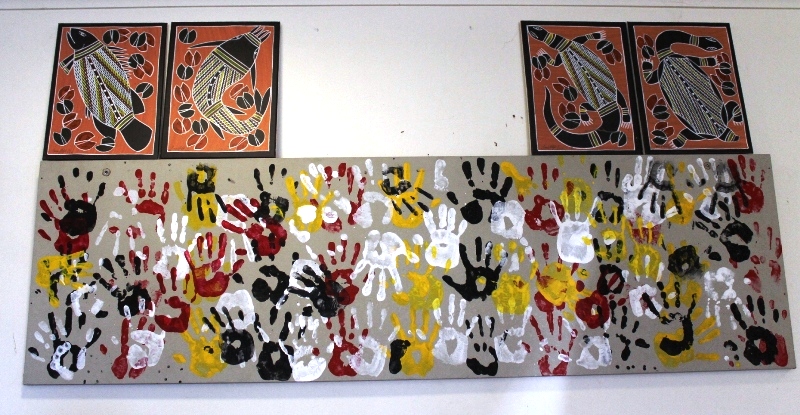
display within North Palm Beach SLSC clubhouse - AJG pic.
The other aspect of that was that I would take a group of people from the club and we would go up and stay on the remote communities so that our young people and their families could see and experience first-hand what living in a remote community was like. These places and communities are quite unlike how they are presented through media.
Towards the end, after a lot of the families had been up, I then took final year Student Teachers up and they would spend some time teaching in the Katherine group of schools. My son, who is now a Music Teacher at Mackellar Girls High, participated in that Program and says that was one of the most worthwhile aspects of his training to be a teacher.
Let’s return to your early days of surfing for a moment – what was your first board?
A Gordon Woods board – and this was back in the day when Brookie (Brookvale) was the centre of surfing and surfboard making and innovations. There were lots of great makers then; I liked the Hot Buttered boards that Terry Fitzgerald used to make.
Which was your favourite break or wave?
I did like what we used to call ‘going down third gate’ at Curly, because when you looked out from the surf, you could be in the middle of nowhere; it’s where the old tip used to be in the dune area – so I enjoyed that break.
Similarly, that’s one of the things I enjoy about North Palmy; if you don’t look south to the headland, you could be in the middle of nowhere, and in fact, when you are up that north end, you are in a National Park.
So I liked and like that aspect of those beaches.
The Point at Dee Why was also one of my favourite surfing breaks. Unfortunately it’s a right-hander and I’m a goofy foot so I would have preferred if it broke the other way, but it doesn’t matter – still loved it.
Now one of my favourite breaks is Werri Beach, down where I live at Gerringong.
Having served for 40 years as a Life Saver – what has this movement given back to you that has kept you on Patrol?
It’s been the camaraderie with good mates. That’s one of the main things. It’s also that opportunity to give something back to the community which, at the same time, is rewarding for me as an individual.
There is one thing that I learnt very early on in my life at the beach and that is that the worst day in the surf is better than the best day at work.
What are you looking forward to this Summer?
I’m looking forward to our club hopefully growing in membership. I’m looking forward to celebrating the 75 years of North Palm Beach SLSC – which officially happened last Season but we weren’t able to celebrate due to Covid restrictions – so it would be great to get old and current members together for that. I’m also looking forward to spending time with my youngest Ellen, who has maintained her involvement in Surf Life Saving - she will be coming back from a Gap year up in Byron and will be back on Patrol with me; so that will be great – one of the things I’ve enjoyed in my Life Saving is participating in this with her. My other daughter, Katie, has also maintained her involvement and now rows Surf Boats with North Narrabeen.
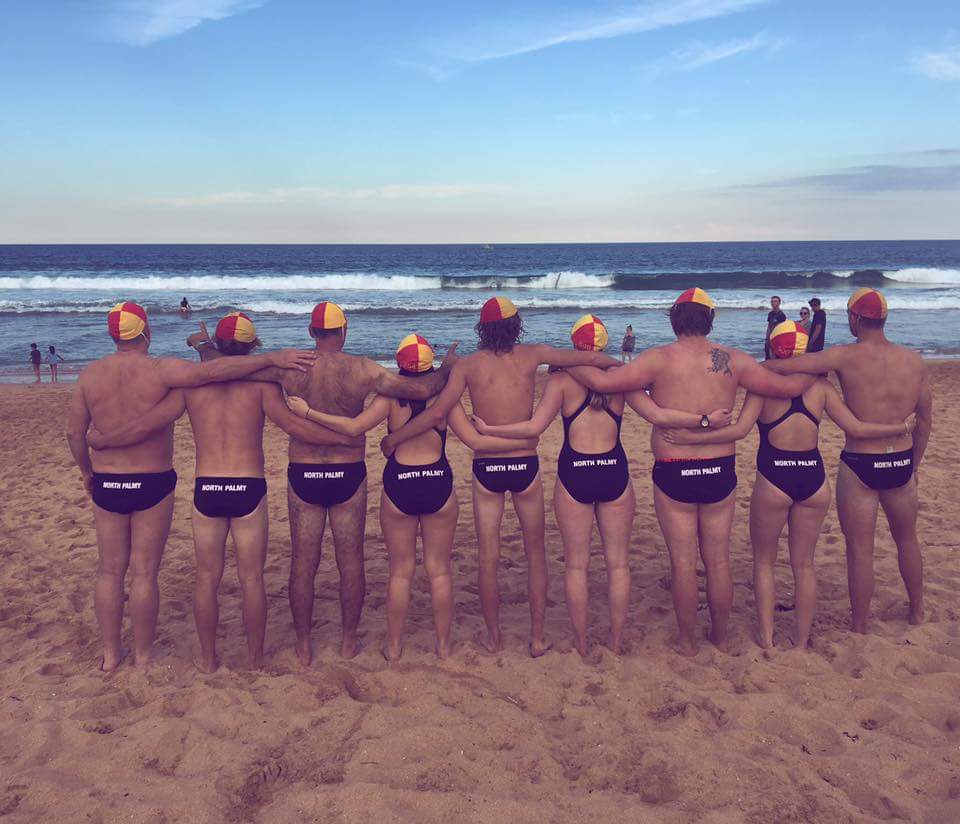
What are your favourite places in our area and why?
Well, North Palmy obviously – why: the view from the surf club to the north with the lighthouse and the headland, and the way the headland is regenerating after the fires.
What is your ‘motto for life’ or a favourite phrase you try to live by?
A quote from Albert Camuis, which is part of a broader quote;
“In the midst of winter, I found there was, within me, an invincible summer.
And that makes me happy. For it says that no matter how hard the world pushes against me, within me, there’s something stronger – something better, pushing right back.”
